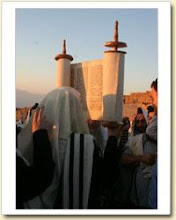Why this order? Why this korban?
By atara staiman
At the beginning of Parshat Tazriah, G-d commands Moshe to tell Bnei Yisrael about the halachot of tumah for a woman after childbirth. If a woman has a boy she is impure for forty days, while if she has a girl, she is impure for eighty days. G-d says that when these forty or eighty days are up, the woman must bring a korban olah and a korban chatat. While olah then chatat is the order written here and in perek aleph when these korbanot are introduced, Rashi quotes the gemara in Zevachim 90a which states that when the korbanot were actually given, the women presents them in the reverse order, with the chatat first and the olah second. Why would these korbanot be written one way if that is not the way that they are presented in the beit hamikdash?
Before we answer this, the Sefer Peninim M’Shulchan Gevoha gives insight as to why the chatat would be given before the olah in the first place. He says the chatat represents the woman’s teshuva. Once she does teshuva and has a clean state, she is then in the proper mindset to bring the korban olah. After getting atonement from G-d she is able to bring the next korban and thank G-d for the nes of having a baby (Vakiyra Rabbah).
So, if the chatat is given first then why does the Torah write that that the olah is given first?
We can apply the concept of “Sur m’ra v’asei tov”, removing the bad and then doing the good, to this situation. Psychologically, the woman needs to bring the chatat in order to clear her slate so that later, she can do good. But, the Torah is telling us that clearing the slate and doing teshuva can be an intimidating process. Although this is not what is actually practiced, in order to ease the women into the process, the Torah writes that she brings the “thank you korban” first and then later the “forgive me” one.
Subsequently, these pesukim also speak about brit millah. This circumcision is traditionally followed by a feast or meal in celebration of the simcha. Why then, is particularly the korban olah chosen if that is the korban that is completely burned? The Netziv even writes that the todah is brought when a feast is to be made and a simcha is to be publicized. The ba’alei simcha give this korban to say thank you to Hashem which is followed by a one day and one night period in which all the forty loaves and the korban must be eaten. This would seem perfectly appropriate to bring for the occasion of a child being born! Shouldn’t the korban todah be chosen, one that goes along with a seudah?
Rav Nevensal explains why davka the korban todah is not chosen and we are to bring the olah instead. He says that many times we are told to thank G-d in public and bring a korban todah but there are also times we are restricted from doing exactly that. The mother of the new child is told to bring the olah, a korban that is all consumed by Hashem. This korban is chosen because that nes that just happened to her is something very personal. Rav Nevensal reminds us that sometimes in our life we’re supposed to make the seudah, when the korban todah is instructed to be brought, and sometimes we are supposed to thank God privately.


No comments:
Post a Comment